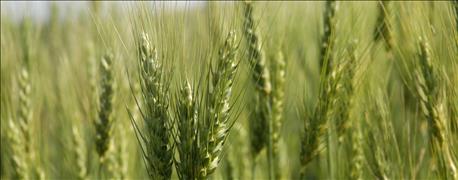June 23, 2015

Wheat scab alerts are sounding in South Dakota and North Dakota.
In North Dakota, “areas of most concern are south of I-94 and along the eastern side of the state. Producers should strongly consider timely fungicide applications in areas of elevated risk,” says Andrew Friskop, North Dakota State University Extension plant pathologist.
The risk for fusarium head blight, or scab, in spring wheat is high for the western part of the state and moderate for scattered areas in the south and east of the state, says Emmanuel Byamukama, South Dakota State University Extension plant pathologists. For areas with high and moderate risk, applying a triazole fungicide may be beneficial in limiting scab..

Conditions are ripe in the Dakotas for spring wheat to become infected with fusarium head blight.
Winter wheat in South Dakota is past flowering and therefore risk for scab development is low, he says.
The weather outlook certainly favors development. July in South Dakota is likely to be cooler and wetter than normal, says Laura Edwards, South Dakota State University extension climate field specialist. North Dakota has equal chances of above, below or average precipitation and temperatures in July.
The cool, wet weather pattern is being driven by a strengthening El Nino and wet soil conditions in the Great Plains.
Plant diseases such as stripe rust have already become apparent in many wheat fields, and given the higher humidity and moisture in the atmosphere, scouting fields for disease will be increasingly important, Edwards says.
"Growers may also be more concerned about weeds, as the recent wet conditions have made some field work difficult for pesticide application," she says. "A few warm, dry days are all a weed needs to grow quickly, and frequent scouting is suggested."
With this much moisture, high stress conditions for livestock could appear periodically because of higher dew points, even with less extreme high air temperatures, she says.
Sources: NDSU and SDSU Extension Services
You May Also Like




